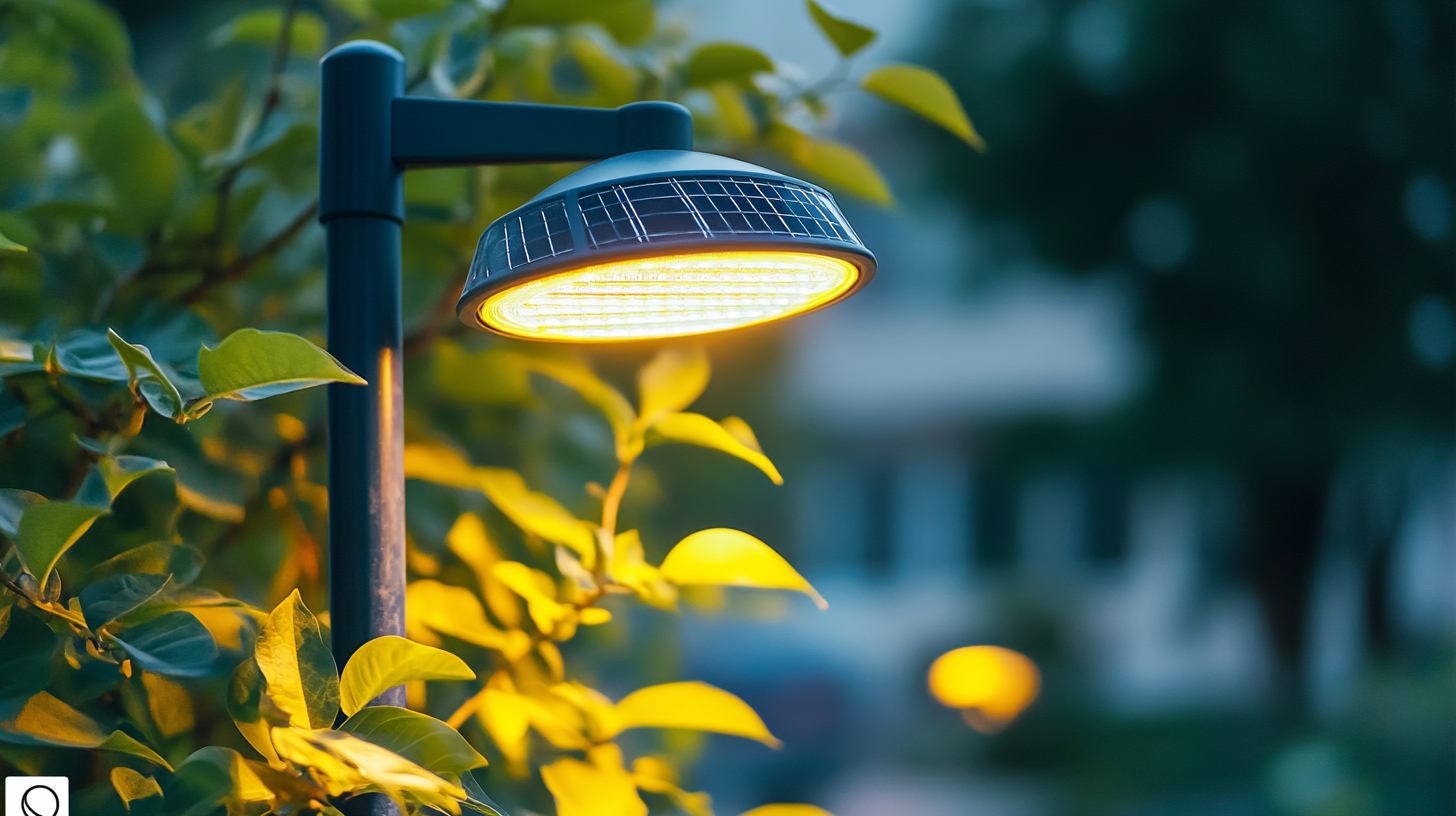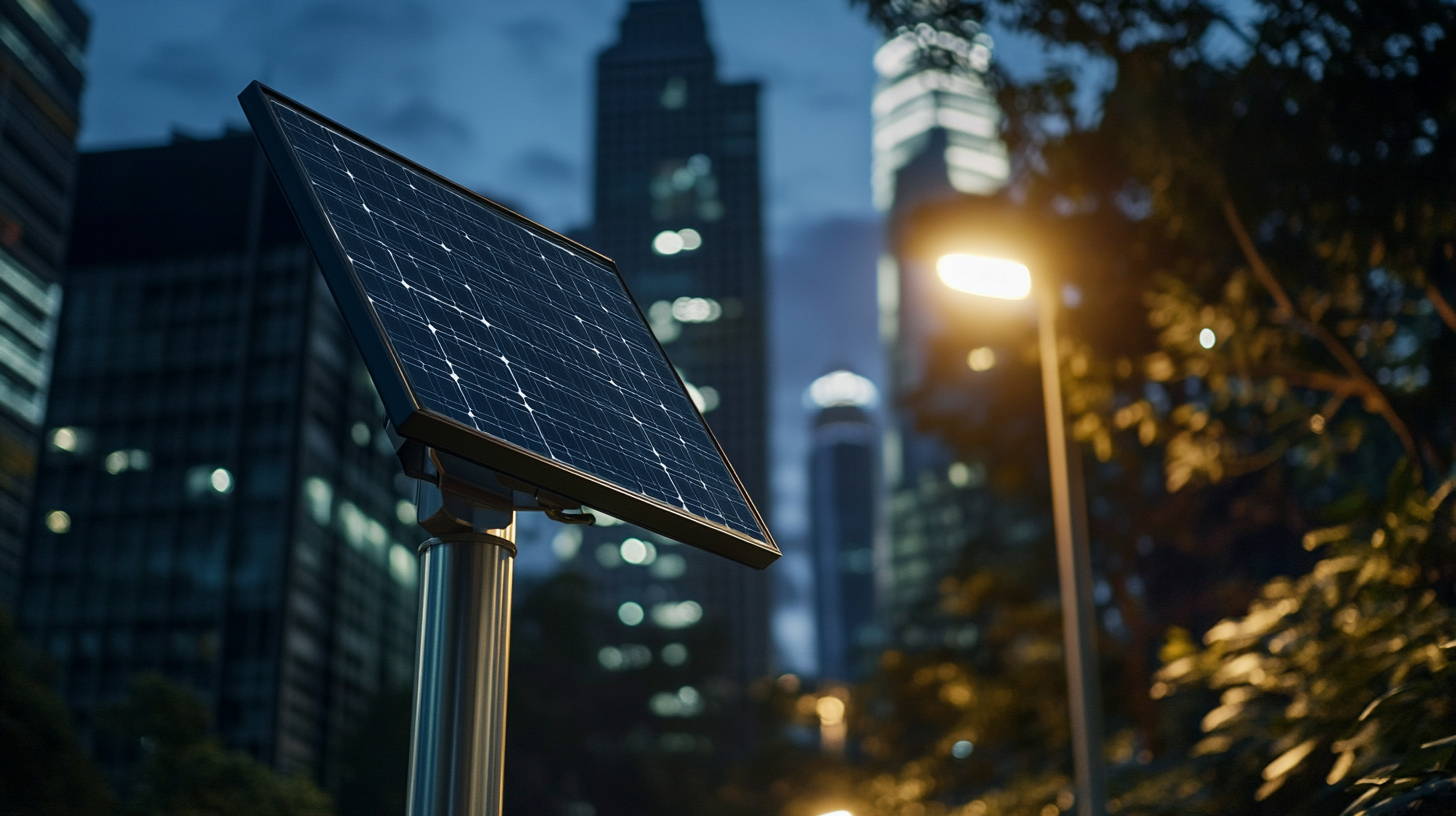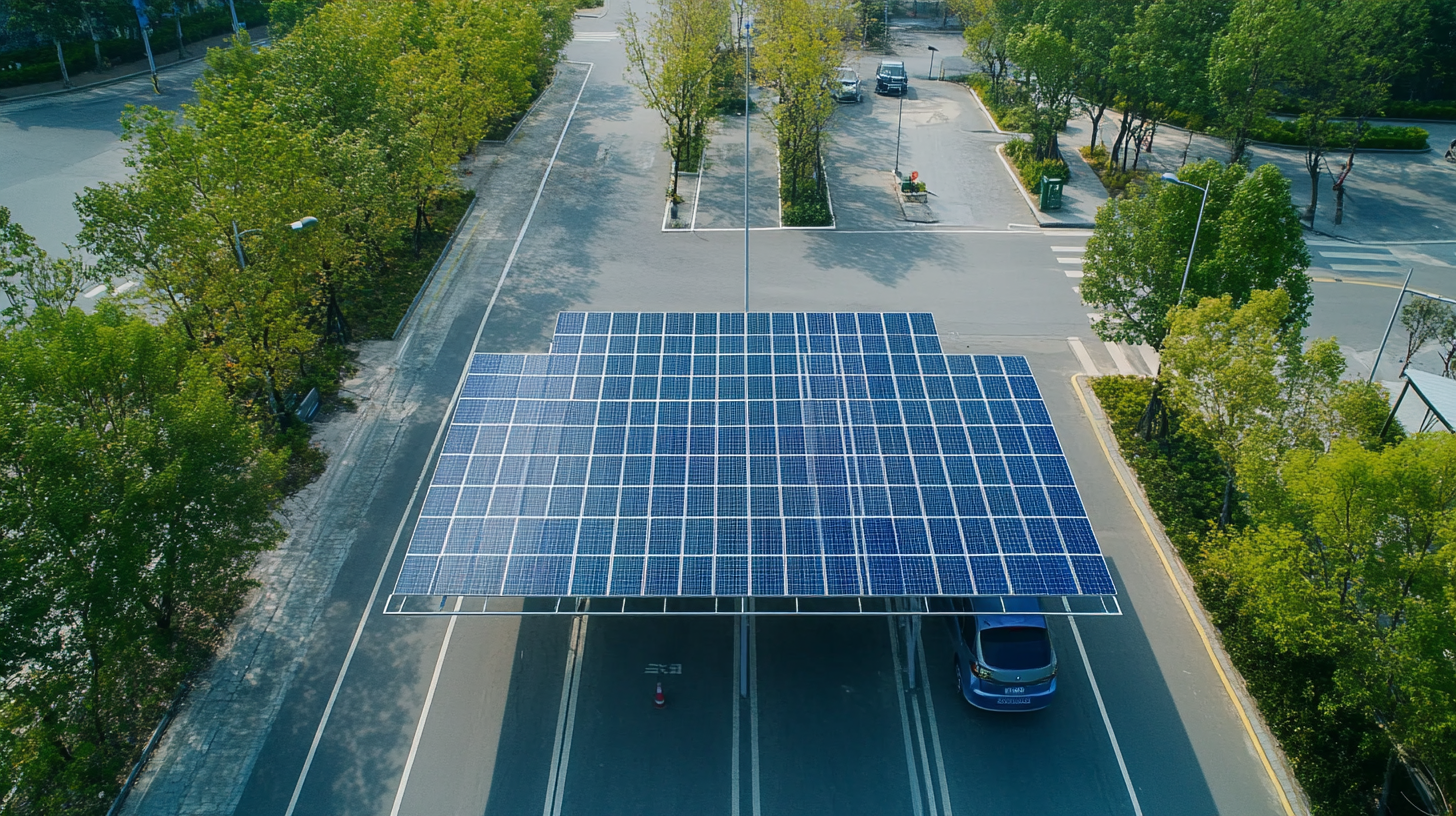Innovative Solutions for Safe Cities 7 Key Benefits of Using Solar Street Lights
As urbanization continues to accelerate, cities around the world are seeking innovative solutions to enhance safety and sustainability. According to a report by the International Renewable Energy Agency (IRENA), the global market for solar energy is set to reach $1.5 trillion by 2025, with solar street lights emerging as a leading application. These lights not only provide illumination but also significantly reduce energy costs and greenhouse gas emissions, contributing to a greener urban landscape. In fact, adopting solar street lights can cut energy consumption by up to 50% compared to traditional lighting systems, making them an invaluable asset for municipalities striving to create safer environments.
Moreover, the implementation of solar street lights aligns with broader initiatives aimed at smart city development. A study by the World Bank indicates that smart public lighting can decrease crime rates by up to 30%, further underscoring the importance of well-lit urban spaces. The integration of solar street lights not only enhances safety but also promotes community well-being by fostering a sense of security in public areas. As cities grapple with the challenges of climate change and population growth, the adoption of solar street lights represents a proactive approach to building resilient, safe, and sustainable urban environments.

Benefits of Enhanced Public Safety Through Solar Street Lighting
The implementation of solar street lights, as demonstrated by the recent installation of 60 units on South Dock Road in Providenciales, marks a significant advancement in urban safety and sustainability. These lights not only illuminate streets but also enhance the public's sense of security during nighttime. Enhanced public safety through solar street lighting is becoming an increasingly relevant topic, especially given the growing concerns surrounding crime rates in poorly lit areas. While there is ongoing debate about the effectiveness of outdoor lighting in crime reduction, the psychological benefits of well-lit environments cannot be overlooked. Communities like Makurdi in Benue State have reported feeling more secure as streets brighten up with solar energy solutions. This adjustment has fostered a more inviting atmosphere for residents, encouraging outdoor activity after dark and potentially increasing community interaction. As cities invest in such infrastructures, they are not just improving visibility; they are also fostering a safer community experience. Moreover, the solar street lighting market is projected to see significant growth, expected to reach a valuation of US$ 23.59 billion by 2033. This burgeoning sector reflects a global shift towards sustainable energy solutions that also prioritize public safety. As municipalities continue to explore innovative ways to enhance urban environments, solar street lighting stands out as a practical solution that can make streets safer, thereby promoting a vibrant, engaged community life after sunset.

Cost-Effectiveness: Saving on Electricity and Maintenance with Solar Solutions
As cities around the world look for sustainable solutions to enhance public safety, solar street lights have emerged as a vital innovation. These solar-powered fixtures not only provide illumination but also offer significant cost savings when compared to traditional lighting systems. According to a report by the National Renewable Energy Laboratory, solar street lights can reduce electricity costs by up to 75%, resulting in substantial savings for municipalities.
In addition to reduced electricity expenses, solar street lights lower maintenance costs. Traditional street lighting requires regular bulb replacements and ongoing electrical system upkeep, which can be both time-consuming and costly. A study conducted by the Solar Energy Industries Association indicated that the average maintenance savings from solar installations can reach $1,200 per light over a ten-year period. This not only liberates budget space but also allows cities to reallocate funds for other critical infrastructure needs.
Moreover, the initial investment in solar street lights tends to be offset by the long-term savings. While the upfront cost may be higher than conventional lighting, the return on investment is evident through reduced utility bills and maintenance fees. Furthermore, the growing availability of financing options and incentives—including tax credits and grants—makes the transition to solar even more economically attractive for cities looking to implement sustainable practices. As we move towards more innovative urban solutions, solar street lighting stands out as an efficient way to enhance safety while simultaneously benefiting the city’s budget.

Environmental Impact: Promoting Sustainability in Urban Areas
As urban areas continue to expand, the challenge of promoting sustainability becomes increasingly prominent. One significant innovation in this realm is the implementation of solar street lights, which not only illuminate our streets but also contribute to a greener environment. These lights harness renewable energy, reducing reliance on fossil fuels and thus lowering greenhouse gas emissions. This aligns perfectly with global sustainability goals, like those outlined by the United Nations, which target substantial improvements in human living conditions and environmental health by 2030.
Solar street lights present multifaceted benefits for urban living. Firstly, they enhance public safety through improved visibility at night, which has a direct correlation with reduced crime rates. Secondly, by integrating smart technology, these systems can be monitored and managed remotely, allowing for efficient energy use and maintenance. Moreover, solar street lights can significantly decrease urban heat islands and their associated environmental impacts by replacing traditional lighting systems.
As cities strive to become smarter and more resilient, the shift towards sustainable solutions like solar street lighting demonstrates a commitment to long-term ecological health. Through these advancements, cities are not merely enhancing public infrastructure; they are also fostering a culture of sustainability that benefits both residents and the environment. The momentum towards adopting such innovative solutions is essential for building safer, greener urban spaces for future generations.

Improved Community Well-Being: How Solar Street Lights Foster Civic Engagement
The integration of solar street lights within urban environments is proving to be more than just a technological advancement; it’s significantly enhancing community well-being. These innovative lighting solutions contribute to creating safer spaces, which in turn fosters civic engagement among residents. When neighborhoods are well-lit at night, individuals feel more secure and are more likely to participate in social activities, community events, and local governance.
Moreover, solar street lights encourage a sense of ownership and pride within the community. Residents are more inclined to take an active role in maintaining their surroundings when they can see the direct benefits of their environment improving. The visibility provided by solar lighting not only deters criminal activities, but also invites vibrant public interactions. People are more likely to walk, cycle, or socialize during the evening hours, transforming streets into lively avenues of engagement.
Additionally, the implementation of solar street lights serves as an educational tool about sustainability and environmental responsibility. As community members access renewable energy solutions in their everyday lives, they become more aware of the significance of sustainable practices. This awareness can lead to greater community investment in eco-friendly initiatives and foster a collective mission towards building a more sustainable future. In this way, solar street lights are pivotal in bridging the gap between technology and community development, ultimately nurturing a closer-knit and more engaged populace.
Technological Advancements: Smart Features for Modern Solar Street Lights
In recent years, solar street lights have undergone significant technological advancements, transforming these once-simple installations into smart features that enhance urban safety and efficiency. Modern solar street lights now come equipped with sensor technologies that allow them to adjust brightness based on pedestrian movement and ambient light levels. This intelligent functionality not only conserves energy but also provides illumination only when needed, ensuring that city spaces remain safe without heavy electricity costs.
Additionally, the integration of IoT (Internet of Things) technology in solar street lights facilitates real-time data collection and analysis. Cities can monitor traffic patterns, inform citizens about environmental conditions, and even provide emergency alerts through connected lighting systems. These advancements enable city planners and officials to make data-driven decisions, improving both the security and livability of urban areas.
Moreover, the incorporation of smart features such as remote monitoring and maintenance capabilities means cities can proactively address issues before they escalate. By reducing downtime and maintenance costs, municipalities can allocate resources more efficiently. The result is a sustainable and technologically progressive approach to urban lighting that not only enhances safety but also contributes to the overall development of smart cities.

